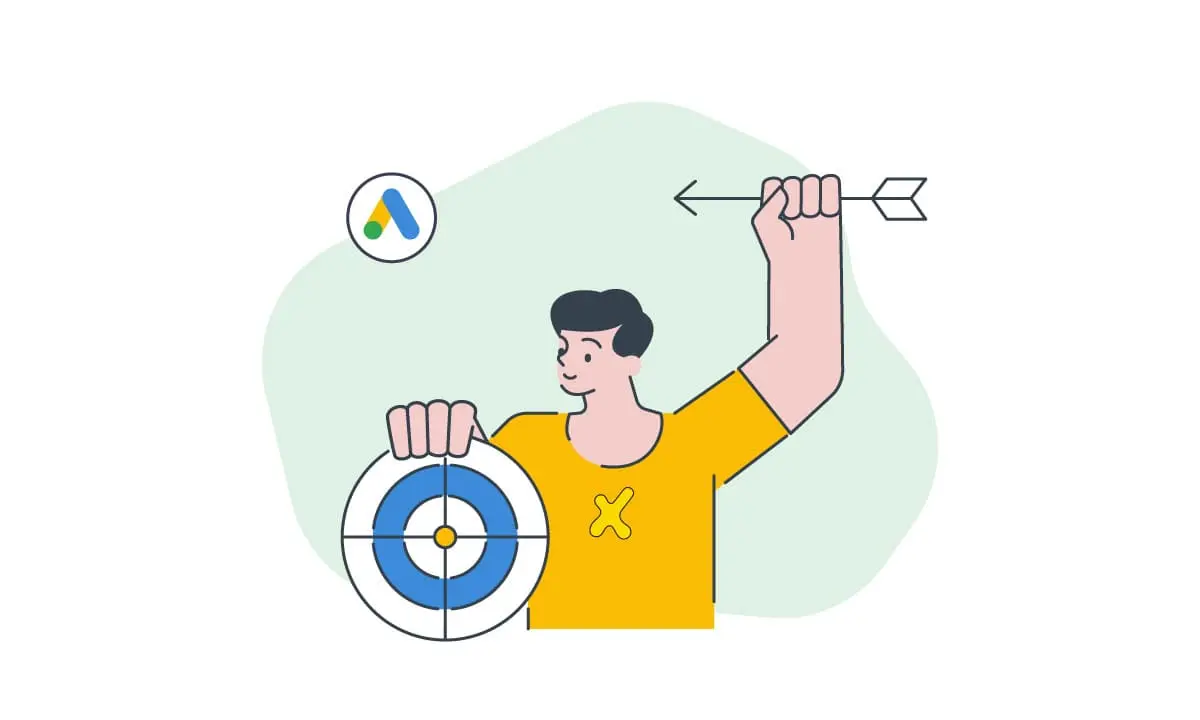In the vast digital realm, where businesses strive to make their mark and captivate the attention of their target audience, advertising has become a powerful tool for success. Enter Google Ads, a force to be reckoned with in the world of online advertising. With its immense reach, targeting capabilities, and performance tracking tools, Google Ads has revolutionized the way businesses connect with potential customers. But like any tool, it is essential to understand the full spectrum of its capabilities and limitations. In this article, we embark on an exploration of pros and cons of Google Ads and its predecessor, Google AdWords, unveiling the details that lie beneath the surface. Join us as we uncover the secrets behind successful digital advertising, understanding both the opportunities and challenges that come with harnessing the power of Google Ads.

Google AdWords, once a widely recognized advertising platform, no longer exists in its original form. In 2018, Google rebranded its advertising products under a unified umbrella called Google Ads. This change aimed to simplify the platform’s name and encompass its expanding range of advertising solutions beyond keyword-based text ads. With the transition to Google Ads, businesses can access a more comprehensive suite of advertising options, including search ads, display ads, video ads, shopping ads, and app promotions, all designed to help businesses effectively connect with their target audience across various digital channels.
The evolution from Google AdWords to Google Ads reflects Google’s commitment to providing businesses with a more holistic and versatile advertising platform. The rebranding signifies a shift from solely focusing on keywords to offering a diverse array of ad formats and targeting options. By embracing the unified Google Ads platform, businesses can leverage its expanded capabilities and take advantage of the evolving digital advertising landscape to achieve their marketing goals more effectively.
Google Ads pros
When it comes to reaching your target audience effectively, Google Ads stands head and shoulders above the competition. Let’s take a closer look at the advantages that make this advertising platform a game-changer.
- Reach a large audience: With billions of searches performed on Google every day, Google Ads allows you to tap into an enormous pool of potential customers. Whether you’re looking to target a local market or a global audience, Google’s extensive reach ensures that your message will be seen by those who are actively seeking products or services like yours.
- Target specific demographics and interests: Google Ads provides a level of precision targeting that is unparalleled. You can tailor your ads to specific demographics, such as age, gender, location, and even income level, ensuring that your message reaches the right people at the right time. Moreover, by leveraging Google’s sophisticated algorithms, you can target users based on their interests and online behaviors, ensuring that your ads are displayed to those who are most likely to convert.
- Control over budget and ad spend: One of the major advantages of Google Ads is the ability to set your own budget and control your ad spend. Whether you have a small budget or a larger one, Google Ads allows you to allocate your resources in a way that suits your business goals. You can set daily or monthly spending limits, adjust bids, and optimize your campaigns to maximize your return on investment.

- Ability to track ad performance: In the world of advertising, data is king. Google Ads provides a wealth of data and analytics that enable you to track the performance of your ads in real-time. You can monitor metrics such as impressions, clicks, conversions, and click-through rates, allowing you to gain valuable insights into the effectiveness of your campaigns. This data-driven approach empowers you to make data-backed decisions and refine your strategies for optimal results.
- Flexibility in ad formats and placement: Google Ads offers a wide range of ad formats and placement options to suit your marketing objectives. Whether it’s text ads, display ads, video ads, or even app promotion, Google Ads has you covered. Moreover, you have the flexibility to choose where your ads appear, whether it’s on Google search results pages, within specific websites in the Google Display Network, or even on popular video-sharing platforms like YouTube. This versatility ensures that you can tailor your ad strategy to match the preferences and behaviors of your target audience.
In the realm of digital advertising, Google Ads reigns supreme, providing businesses with unparalleled advantages. From the vast reach of Google search vs display ads to the precise targeting capabilities, budget control, performance tracking, and ad format flexibility, Google Ads empowers businesses to connect with their audience in a meaningful and impactful way. Now that we’ve explored the advantages, let’s delve into the potential challenges and disadvantages of Google Ads in the next section.
Google Ads cons
While Google Ads offers numerous advantages, it’s essential to recognize that there are also potential drawbacks that businesses should consider before diving headfirst into their advertising campaigns. Let’s explore some of the challenges and disadvantages that come with harnessing the power of Google Ads.
- Competitive environment can lead to high costs: The popularity and effectiveness of Google Ads mean that competition for ad space can be fierce. As more businesses vie for the attention of the same target audience, the cost per click (CPC) can increase significantly. Depending on your industry and the competitiveness of your chosen keywords, this could result in higher advertising costs and potentially affect your return on investment.
- Ad fatigue and low click-through rates: In the digital age, consumers are bombarded with a constant stream of advertisements. This saturation can lead to ad fatigue, where users become desensitized to ads and are less likely to engage with them. Consequently, click-through rates (CTRs) may decline, making it more challenging to capture the attention and interest of your target audience effectively.
- Learning curve for beginners: Google Ads can be a complex platform, particularly for those new to online advertising. From understanding the different types of Google Ads, such as search ads, display ads, shopping ads, and video ads, to mastering keyword research, ad targeting, and campaign optimization, there is a learning curve involved. Businesses must invest time and effort in learning the intricacies of the platform or seek professional assistance to ensure optimal campaign performance.

- Fraudulent clicks can waste ad spend: Unfortunately, the realm of online advertising is not immune to fraudulent activities. Click fraud, where individuals or automated bots click on ads with no genuine interest or intention to engage, can lead to wasted ad spend. Although Google has robust measures in place to detect and mitigate click fraud, it remains a concern that can potentially impact the effectiveness and cost-efficiency of your campaigns.
- Ad approval process can be restrictive: Google Ads has strict policies and guidelines governing the content and format of advertisements. While these regulations are in place to ensure a positive user experience, they can also be restrictive for businesses. Ads may undergo a manual review process, which can result in delays and limitations on creative freedom. It is essential to carefully adhere to Google’s guidelines to avoid potential roadblocks in getting your ads approved.
By recognizing these potential disadvantages, businesses can make informed decisions and develop strategies to overcome these challenges. While the types of Google Ads may offer unparalleled opportunities for reaching and engaging your target audience, it’s important to be aware of the potential pitfalls and proactively address them. Now, let’s move on to exploring the pros and cons of the specific Google Ads platform, known as Google AdWords, in the next section.
Pros and cons of Google Ads compared to other ad platforms
In a vast digital landscape brimming with advertising possibilities, it’s essential to explore how Google Ads stacks up against other advertising platforms. Let’s delve into the advantages and disadvantages of Google Ads when compared to its competitors, providing you with a comprehensive understanding of its unique position in the advertising realm.
Google Ads pros compared to traditional advertising
- Precision targeting: Unlike traditional advertising methods that cast a wide net, Google Ads offers unparalleled precision targeting capabilities. Through factors such as demographics, interests, and search intent, businesses can laser-focus their ads to reach the most relevant audience. This level of precision ensures that ad spend is optimized by minimizing wasted impressions on disinterested viewers.

- Measurable results: Traditional advertising often lacks the ability to accurately measure campaign performance. In contrast, Google Ads provides a wealth of data and analytics to gauge the effectiveness of your ads. Detailed metrics such as impressions, clicks, conversions, and click-through rates enable businesses to track and analyze their campaigns in real-time, empowering them to make data-driven decisions and optimize their strategies accordingly.
Comparison with social media advertising
- Intent-driven targeting: Google Ads leverages user intent captured through search queries, allowing businesses to target individuals who are actively seeking relevant information or products. This intent-driven targeting sets Google Ads apart from social media platforms where users primarily engage for social connections. By reaching potential customers precisely at the moment of need, businesses can increase the likelihood of conversion.

- Diverse ad formats: While social media platforms predominantly offer display ads and sponsored content, Google Ads provides a more extensive range of ad formats, including search ads, display ads, video ads, shopping ads, and more. This versatility allows businesses to select the most suitable format for their target audience and marketing objectives, ensuring optimal visibility and engagement.
Comparison with other search engine advertising platforms
- Extensive reach: Google’s dominance as the most widely used search engine globally gives Google Ads an unparalleled reach. Businesses can leverage this vast audience to connect with potential customers on a global scale, capturing valuable market share and expanding their brand presence.
- Advanced targeting options: While other search engine advertising platforms exist, Google Ads sets itself apart through its advanced targeting options. The platform’s robust tools enable businesses to precisely target specific demographics, interests, and even remarket to users who have previously interacted with their brand. This level of sophistication allows for highly effective and efficient ad campaigns.
While Google Ads boasts numerous advantages, it is important to consider potential disadvantages as well. The competitive landscape can lead to higher costs, and there may be a learning curve for newcomers to navigate. Additionally, the presence of ad fatigue and the potential for fraudulent clicks are challenges to be aware of. Nevertheless, when comparing Google Ads to traditional advertising, social media advertising, and other search engine advertising platforms, its precision targeting, measurable results, extensive reach, and diverse ad formats make it a compelling choice for businesses looking to maximize their advertising efforts in the digital space. By understanding the advantages and disadvantages in this comparative context, businesses can make informed decisions and craft advertising strategies that align with their unique needs and goals
Conclusion
In the ever-evolving world of digital advertising, Google Ads, formerly known as Google AdWords, has emerged as a dominant force. As we have explored the pros and cons of Google Ads and compared it to other advertising platforms, it is evident that Google Ads offers significant advantages for businesses looking to maximize their online presence and connect with their target audience.
The precision targeting, extensive reach, and diverse ad formats of Google Ads set it apart from traditional advertising methods. With the ability to target specific demographics, track ad performance, and optimize campaigns based on real-time data, businesses can allocate their ad spend more effectively and achieve measurable results. However, it’s crucial to acknowledge the potential challenges, such as competitive costs, ad fatigue, and a learning curve for beginners, that come with harnessing the power of Google Ads.
FAQs
Can I control my budget and ad spend with Google Ads?
Yes, Google Ads provides robust budgeting and bidding options, allowing you to set a daily or monthly budget and control how much you spend on each click or impression.
Can I target specific demographics and interests with Google Ads?
Absolutely! Google Ads provides advanced targeting options, including demographics, interests, and even remarketing, enabling you to reach your desired audience precisely.
Is Google Ads better than traditional advertising methods?
Google Ads offers advantages over traditional advertising, such as precise targeting, measurable results, and cost-effectiveness, making it a compelling choice for businesses in the digital era.
What are the disadvantages of using Google Ads?
Some potential drawbacks include the competitive environment leading to high costs, the learning curve for beginners, ad fatigue, and the possibility of fraudulent clicks wasting ad spend. However, these challenges can be overcome with proper planning and optimization strategies.







 Facebook Ads Spy Tool
Facebook Ads Spy Tool TikTok Ads Spy Tool
TikTok Ads Spy Tool